Did you ever have to hit a curved shot to get around a hindrance on a golf course? In other words, did you intend to hit the ball from left to right but instead hit it with a curve from right to left or vice versa?
You may have realized how difficult it is to hit the golf ball with the appropriate amount of motion and force to create the correct curve.
Wrestling with this terrible double-cross while attempting a curving stroke is not new to golfers. It’s common for golfers to try to strike the ball in direction A, but it hits in direction B due to a lack of control.
Do you even know what is a double cross in golf?
Well, in this article we will dive deeper to understand what a double-cross is, its reasons, and how to overcome it.
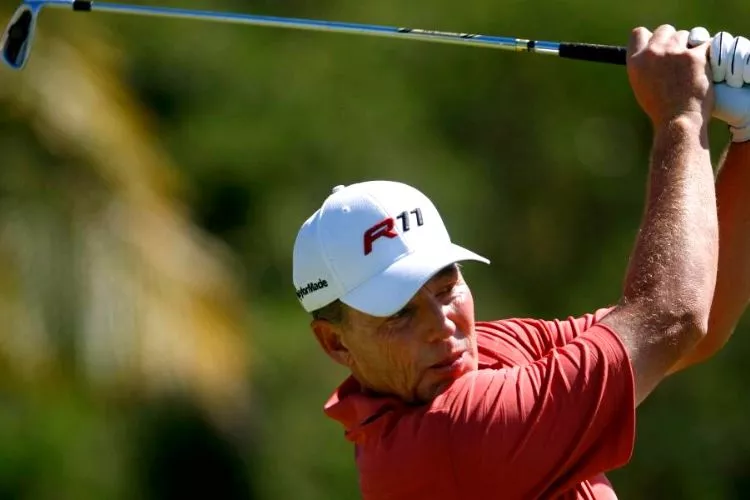
What is a double cross in golf?
When you try to play a golf fade or draw but end up hitting the opposite stroke, it is known as a “double-cross.”
Let’s try to elaborate on the problem clearly with the following steps:
- You set your target to negligibly left but end-up up hitting a fade or draw.
- You set to shoot a fade, hitting a draw or fade.
- In both instances, you miss the target line by a considerable margin.
- The final result is a bogie or worse than that.
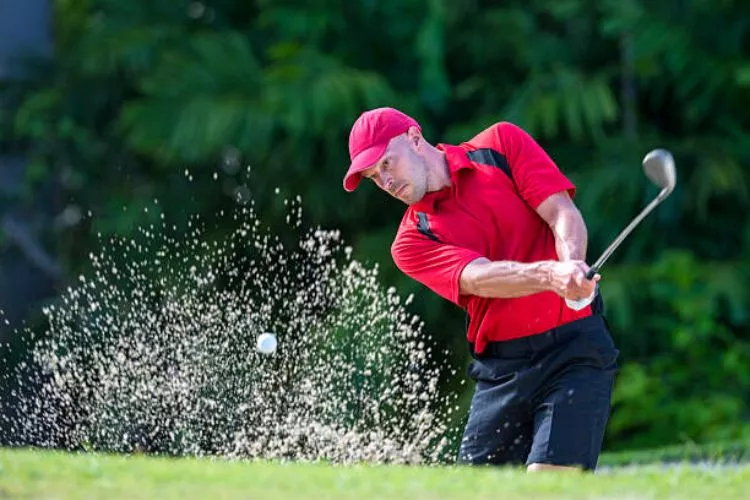
What causes double cross golf swing?
Let’s now understand the possible causes of a double-cross golf swing.
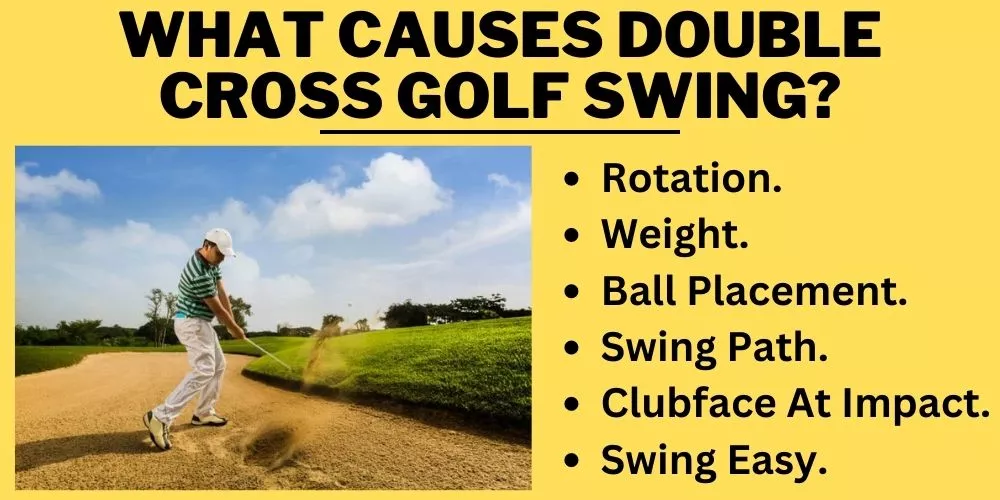
Rotation
Lower rotational speed causes your hands to go ahead of the ball, which causes your clubface to shut, resulting in a double cross. This situation puts you on the back foot for the rest of the hole. Furthermore, the ball hooks frantically to the course’s left side.
Weight
You may experience losing balance and falling back due to the impact of continuous shots’ slicing. It is because when you try to shift your body weight forward, the body and clubface are left open due to the effect.
If you draw too many golf shots, you may notice an early shift in your weight on the downswing. It causes the ball to hook after you close your body and clubface.
Ball Placement
The ball’s placement in the stance can affect the curve’s direction. According to Mark Blackburn from Titeist, you must place the ball slightly back to evoke a draw. To start a right-to-left curve; you can close the angle of your clubface at impact by being in that position.
On the flip side, while attempting to fade the ball, Backburn suggests placing the ball at the front center of your stance.
An incorrect ball placement hampers the impact by preventing the clubface from being at the desired angle. Therefore, it’s better to slice the ball when you are hoping to draw.
Swing Path
Your swing path can also play a significant role in causing a double cross. You may end up with a draw rather than a slice or fade if your golf swing shifts inside out. On the other hand, shots that slide or face may be mainly due to an outside-in swing.
The ball may fade or slice far from the pin if you target precisely, planning to pull the ball; however, swing it outside in. Moreover, you may hook the ball if you aim left of the target for a fade and produce an inside-out swing.
Clubface At Impact
The final verdict comes from the clubface at impact, regardless of your shot’s swing, rotation, ball position, or impact final verdict. Leaving the face open at contact leads to left-to-right sidespin.
It ultimately results in a slice or a fade. On the contrary, a draw or hook is due to a closed clubface at impact, causing an increase in right-to-left sidespin.
Swing Easy
An awful shot is due to golfers swinging rapidly in an attempt to smoke their balls. A faster swing can result in double-crosses. Experts recommend swinging easily and not forcing the shot.
How do you stop a double cross?
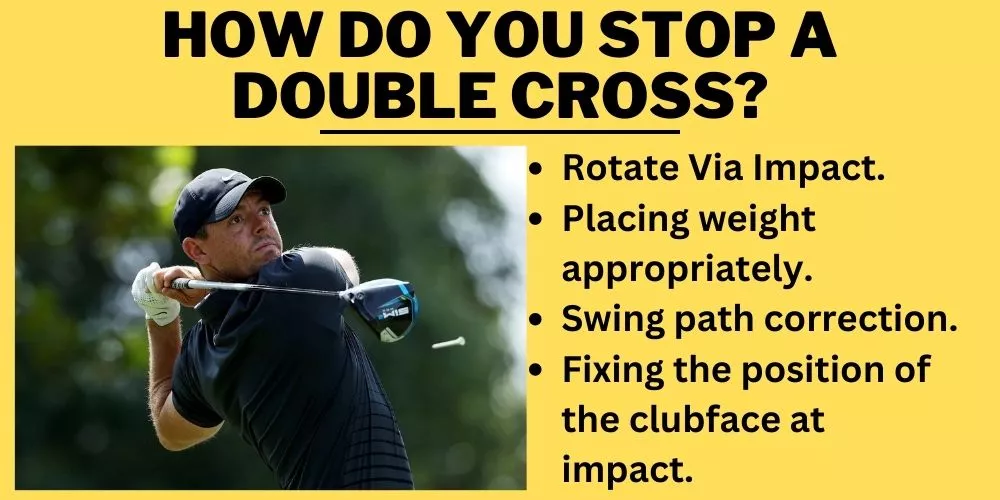
Rotate Via Impact
Essentially working on rotation will help you to get rid of the double-cross. Applying brakes on the hip rotation before impact may result in your hands directing the clubhead. It frequently initiates the position near the clubface causing you to hook the shot.
Concentrating on rotating your hips via impact to force the clubface alongside the calculated line. It helps you to enhance your power with increased chances of executing your shot as planned.
Placing weight appropriately
Place your weight on the back foot to practice a fade. Before you hit the ball, raise your front foot and put all weight on your hind leg. It helps you keep your body flexible via impact, causing a fade.
Practice with a couple of half swings to understand whether this style helps keep the clubface open, leading your fall to a fade. On the other side, raise your back foot and set the weight on your front foot to go for a draw.
Subsequently, this practice enhances your muscle memory to accomplish fade and draw shots consistently and keep away the double-cross.
Swing path correction
Before striking the draw, it’s essential to swing in and out to get a fair chance of closing the clubface at impact. For right-handers, a fade or slice occurs when the open clubface at strike generates a sidespin from left to right.
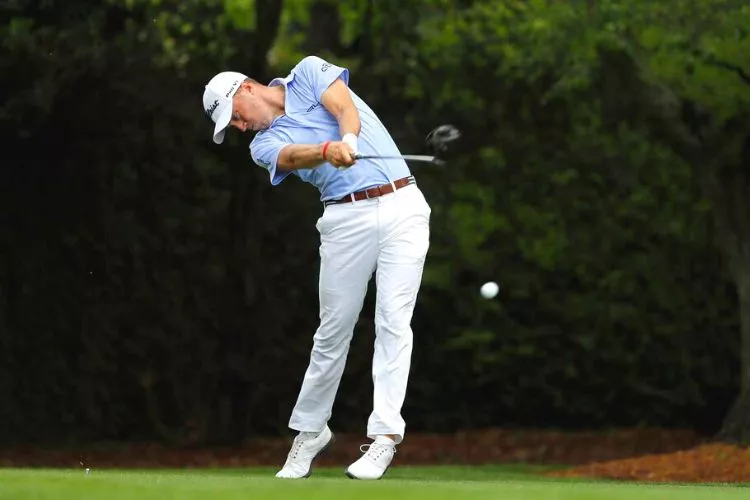
Starters need to broaden the stance and place the ball on the front side at the center of the clubface. The next step involves lifting the club backward, far away from your body, and following an inside path on the downswing.
Doing this results in your clubface striking the ball well, creating a sidespin with the open clubface, causing a fade.
Fixing the position of the clubface at impact
If the above still results in the club remaining off the plane, you can try the below-mentioned drill. Lift the club to have a half swing, wait and concentrate on the swinging- the inner side for a fade and the outer side for a draw.
Practicing with the club’s placement at this point of the swing enhances your consistency preventing double-cross.
What are the 3 keys to the golf swing?
Even though the golf swing is complicated, three significant motions distinguish amateur golfers from professionals. These movements are:
- Your shoulders turning in the backswing
- Tilting in the backswing, and
- Bending in the follow-through.

Tilting in the backswing
It’s a common perception about golfers not having flexibility similar to the pros, to turn about 90 degrees away from the goal. If done correctly, a few body activities in the backswing help to increase the extent of the shoulders turning.
It happens as golfers try to bring power by restricting their hips, thereby constraining the flexibility of the knees with the hind leg in the backswing by coiling up. However, in reality, this action hampers the power and puts a constraint on the shoulders turning.
Golfers should straighten the hind leg during the backswing and generate more power by turning both the shoulders and hips effortlessly without any constraints. It helps them to achieve the desired in-to-out swing track consistently.
shoulder tilt
One of the most crucial swing components is the shoulder tilt. Golfers with higher incapacities frequently have shoulders that are significantly level to the ground at the peak of their swing than the average professional, whose lead shoulder is frequently lower and farther toward the ground than the hind shoulder.
Reiterating the previous point, straightening the trailing leg can also aid in increasing the amount of shoulder tilt at the swing’s top.
Bending in the follow-through
The third element of an effective golf swing is a little backbend of the upper body during the follow-through, while the arms are extended (or stretched) toward the target.
Golfers who routinely hit the ball shorter and imperfectly tend to bend their upper bodies farther forward while keeping their arms flexed and tight to their bodies.
What are the 4 steps to the golf swing?
The four-step to an ideal golf swing are G.A.S.P. which means:
- Grip: The way your hands attach to and engage with the club.
- Alignment: Clubface alignment during the swing and at the address.
- Stance: Body alignment and aim for the shot pattern you desire.
- Posture: How you approach the golf ball, including how you place the ball
Conclusion:
A double cross in golf is completely different from what the player has intended. It’s an obvious error in the initial stages and a golfer can correct it with practice. A golfer can improve the golf swing to prevent the double cross by practicing correctly.
You can follow the methods given above or discuss the problem with a swing instructor and get advice from him. Understanding the secret behind getting aware of the ball’s motion and flight will help you to prevent double crosses in golf.
